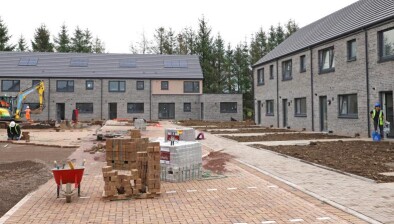Dumfries and Galloway Council develops LHEES to enhance energy efficiency and target fuel poverty

Dumfries and Galloway Council is developing a Local Heat and Energy Efficiency Strategy (LHEES) in response to the Scottish Government’s guidance.
The strategy aims to improve energy efficiency and reduce greenhouse gas emissions from heating buildings.
Scotland’s Local Heat & Energy Efficiency Strategies (LHEES) will set out the long-term plan for decarbonising heat in buildings and improving energy efficiency across an entire local authority area. They are driven by Scotland’s statutory targets for greenhouse gas emissions and fuel poverty.
Members of Dumfries and Galloway Council’s Economy and Resources Committee meeting were asked to note the activity and work undertaken to create the Local Heat and Energy Efficiency Strategy (LHEES) for Dumfries and Galloway, agree to the draft LHEES, note the final submission date to the Scottish Government is 31 December 2023, and agree to a further members seminar.
In response to guidance from the Scottish Government, Dumfries and Galloway Council’s draft Local Heat and Energy Efficiency Strategy was meticulously created with a high degree of care and dedication. Its proposed submission in December 2023 will be a testament to the hard work and determination of all those involved in creating a brighter, more sustainable future for our communities.
A local heat and energy efficiency strategy is a long-term strategic framework for improving the energy efficiency of buildings in the local authorities’ area and reducing greenhouse gas emissions from heating such buildings.
As per the Scottish Government’s requirements to create a Local Heat and Energy Efficiency Strategy, Dumfries and Galloway Council has committed to developing a comprehensive plan to reduce carbon emissions and establish an even more sustainable economy. Our primary focus will be improving energy efficiency, sourcing renewable energy, and creating a network of local heat and energy infrastructure. We will work closely with the Scottish Government to execute this strategy effectively and ensure the best possible outcomes. Dumfries and Galloway Council has taken charge and is actively working towards a sustainable future in response to the Scottish Government’s call to action for creating a Local Heat and Energy Efficiency Strategy.
The Scottish Government’s Heat in Buildings Strategy clarifies that all buildings must improve energy efficiency and install zero-emissions heating by 2045. The council recognises that locally-led planning will be vital to delivering the decarbonisation of heat in buildings, and a strategic approach is needed to allow delivery on a large scale.
Dumfries and Galloway Council’s Climate Emergency Support Team is in the summative stages of preparing its Local Heat and Energy Efficiency Strategy with consultants from City Science.
The South of Scotland Enterprise (SOSE) is focused on enabling a Just Transition to Net Zero in the South of Scotland. It has identified many opportunities and benefits for businesses, social enterprises, communities, or initiatives/projects.
Dumfries and Galloway Council firmly believes it can attract businesses by using a low-carbon approach in developing the Local Heat and Energy Efficiency Strategy. This benefits businesses and helps enhance the region’s low-carbon focus, making rural areas more vibrant and thriving for local communities. By working with its stakeholders, the council can diversify its communities and create new opportunities for sustainable, resilient, and low-carbon development. Additionally, improving its region through low-carbon opportunities can positively impact the health and well-being of its communities by empowering them to create community infrastructure and assets.
Councillor Ian Carruthers, chair of Dumfries and Galloway Council’s Economy and Resources Committee, said: “We want to create even more jobs and economic opportunities, and these low-carbon opportunities can create a platform for growth in the region.” He also added that this could help to reduce poverty and inequality. Investing in low-carbon opportunities can also provide environmental benefits such as reducing air pollution and conserving natural resources.
Councillor David Inglis, vice chair, added: “We have the opportunity to create a more sustainable and resilient region that will benefit our communities and businesses. This can be achieved through a focus on the low carbon economy and by reducing our carbon emissions.”









